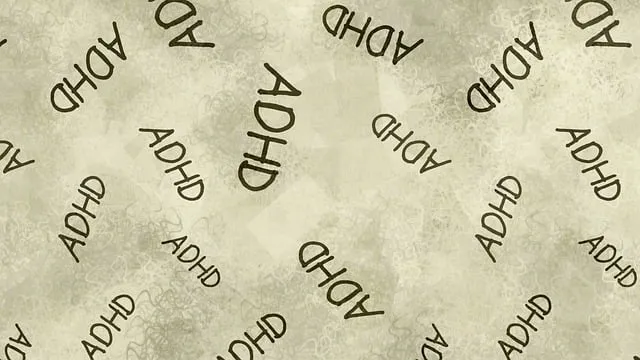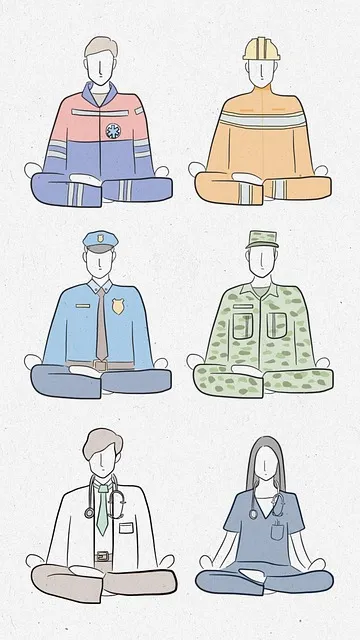Kaiser Permanente Mental Health Northglenn leads effective community outreach by prioritizing local needs assessment, engaging diverse populations through holistic well-being programs, and tailoring initiatives like Anxiety Relief workshops. Their strategic approach includes community events, educational sessions, advocacy, and policy analysis, empowering individuals with self-care routines, resilience, and lifelong mental wellness skills. Success measurement involves evaluating participation rates, engagement, and mental health indicator improvements to ensure the long-term sustainability of these services within the community.
Community outreach programs play a pivotal role in bridging the gap between healthcare services and those who need them most. This article explores the implementation of such programs, highlighting essential steps from understanding community needs to measuring success. We present Kaiser Permanente Mental Health Northglenn as a successful model for outreach, showcasing effective engagement strategies that have led to tangible impacts. By examining these components, we aim to provide insights into creating sustainable, impactful programs.
- Understanding Community Needs: A Key Step in Program Design
- Kaiser Permanente Mental Health Northglenn: A Model for Outreach
- Implementing Effective Community Engagement Strategies
- Measuring Success and Continuity: Ensuring Long-Lasting Impact
Understanding Community Needs: A Key Step in Program Design

Understanding community needs is a fundamental step in designing effective outreach programs, such as those implemented by Kaiser Permanente mental health Northglenn. By engaging with the local community and gathering insights, organizations like Kaiser Permanente can tailor their initiatives to address specific challenges. This involves recognizing not just the prevalent mental health issues but also the unique cultural, socio-economic, and environmental factors that influence them.
Inner Strength Development and Emotional Well-being Promotion Techniques are integral components of any successful program. By focusing on these aspects, community outreach efforts can empower individuals with mood management skills, fostering resilience and enhancing overall well-being. This approach ensures that programs are not just reactive but proactive in meeting the diverse needs of the community they serve.
Kaiser Permanente Mental Health Northglenn: A Model for Outreach

Kaiser Permanente Mental Health Northglenn stands as a beacon of hope and innovation in community outreach programs. This initiative has successfully blended comprehensive mental healthcare services with proactive engagement strategies, demonstrating a holistic approach to well-being. By integrating various programs that promote positive thinking and resilience building, Kaiser Permanente has not only addressed immediate mental health needs but also equipped individuals with lifelong coping mechanisms.
The model’s success can be attributed to its multifaceted strategy, encompassing community events, educational workshops, and advocacy campaigns. This inclusive framework ensures that mental health support is accessible and tailored to diverse populations. Moreover, the program’s emphasis on mental health policy analysis and advocacy underscores its commitment to systemic change, fostering an environment where proactive mental wellness becomes a societal priority.
Implementing Effective Community Engagement Strategies

Implementing effective community engagement strategies is key to fostering mental wellness and promoting Self-Care Routine Development for Better Mental Health, as demonstrated by Kaiser Permanente mental health Northglenn initiatives. These programs aim to create inclusive spaces where residents can connect, learn, and support one another. By partnering with local organizations and leveraging digital platforms, Northglenn successfully reaches diverse audiences, addressing specific mental health concerns such as Anxiety Relief.
Engaging the community requires a multi-faceted approach. Event-based interventions, workshops, and peer support groups encourage open dialogue about mental health, breaking down barriers and stigma. Educational sessions focused on stress management, mindfulness techniques, and resilience building empower individuals to take charge of their well-being. Incorporating these strategies into community outreach programs ensures that mental health resources are accessible and tailored to the unique needs of Northglenn residents.
Measuring Success and Continuity: Ensuring Long-Lasting Impact

Measuring the success of community outreach programs, such as those offered by Kaiser Permanente mental health Northglenn, is a crucial step in ensuring their longevity and impact. It involves evaluating not just immediate outcomes but also the long-term effects on the community. By assessing participation rates, engagement levels, and the overall well-being of the community, organizations can gauge the effectiveness of their initiatives. This process includes collecting feedback from participants, tracking improvements in mental health indicators, and measuring the sustainability of new behaviors or practices adopted during the program.
For instance, Kaiser Permanente’s mental health Northglenn could focus on implementing Mental Health Education Programs Design that empower individuals with knowledge and skills to support themselves and others. Additionally, providing Crisis Intervention Guidance and Trauma Support Services can lead to significant improvements in community resilience. Continuity is key; ensuring these programs become integral parts of the community fabric, fostering ongoing support networks and self-help groups, will create a lasting impact, benefiting current and future generations.
Community outreach programs, as demonstrated by initiatives like Kaiser Permanente Mental Health Northglenn, can significantly impact public health. By understanding community needs and implementing effective engagement strategies, organizations can create lasting positive change. Measuring success is crucial to ensure continuity and maximize the program’s impact, fostering a healthier and more resilient community. These steps provide a roadmap for successful outreach that can be adapted and scaled, ultimately improving access to vital services.






